
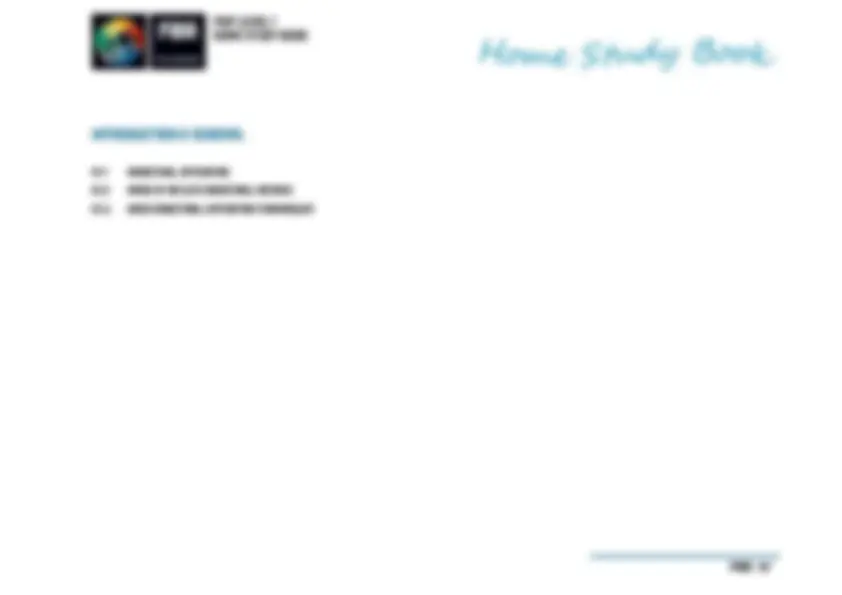
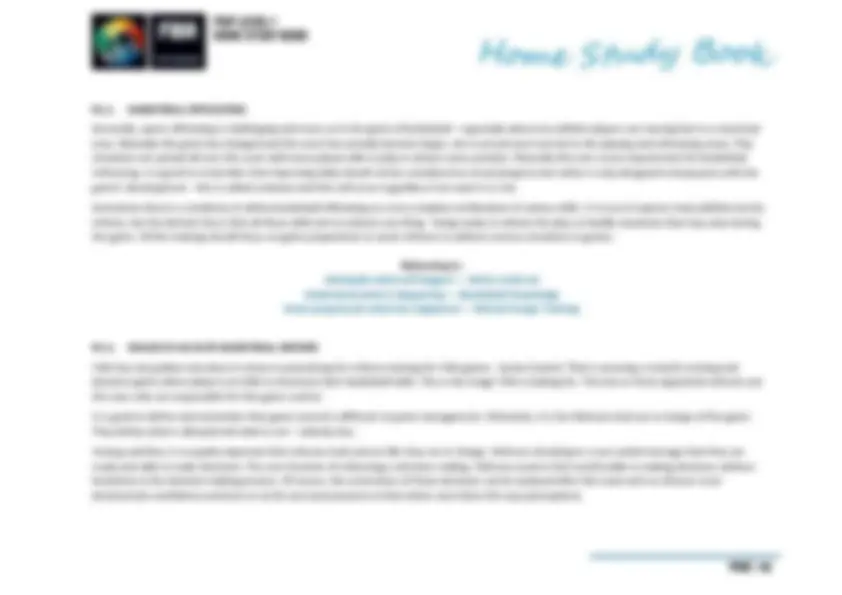
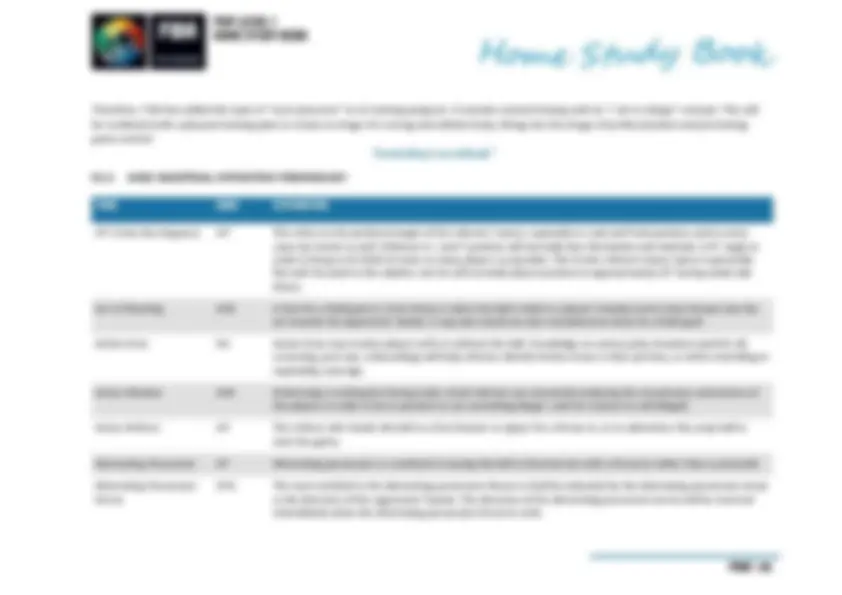
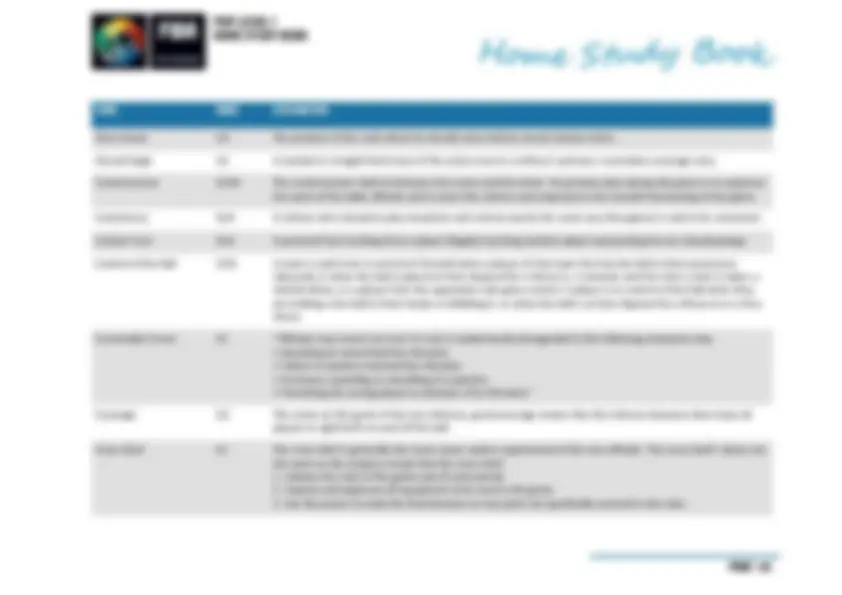

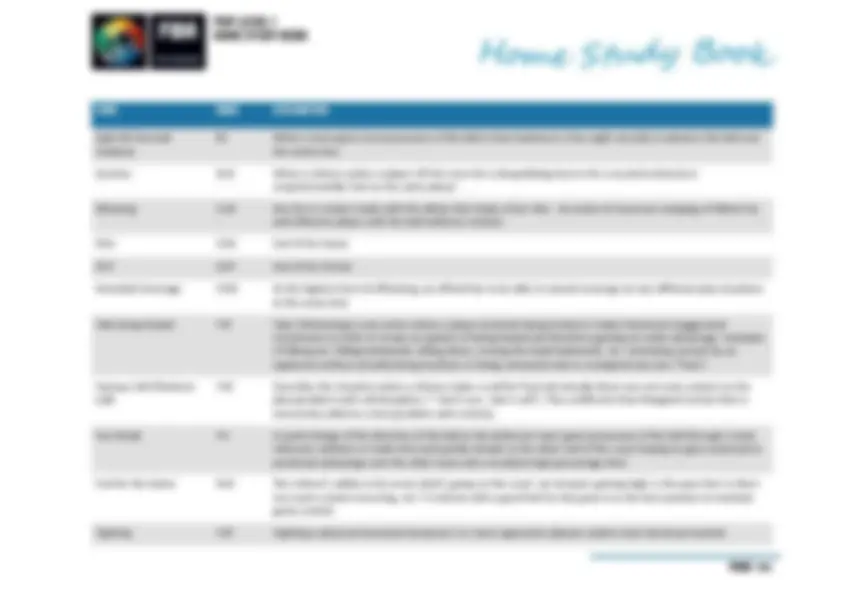
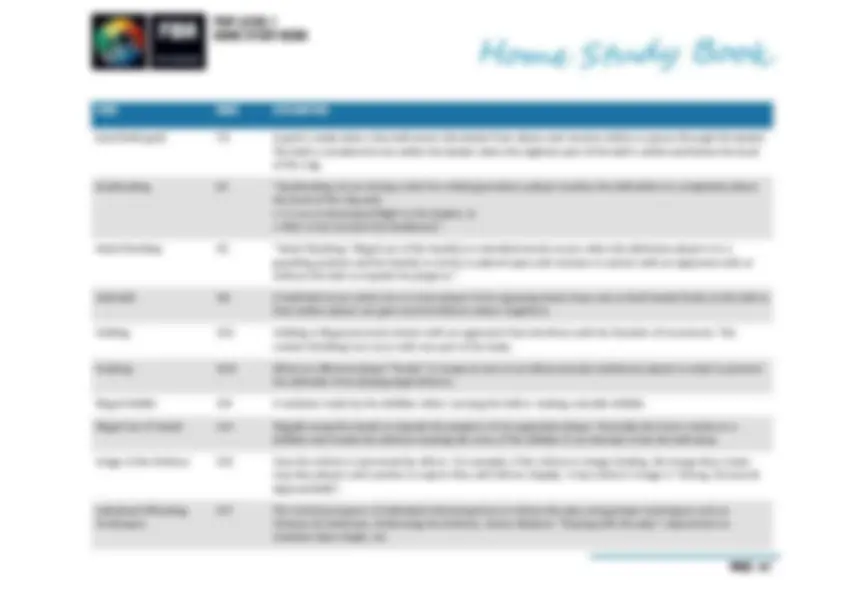
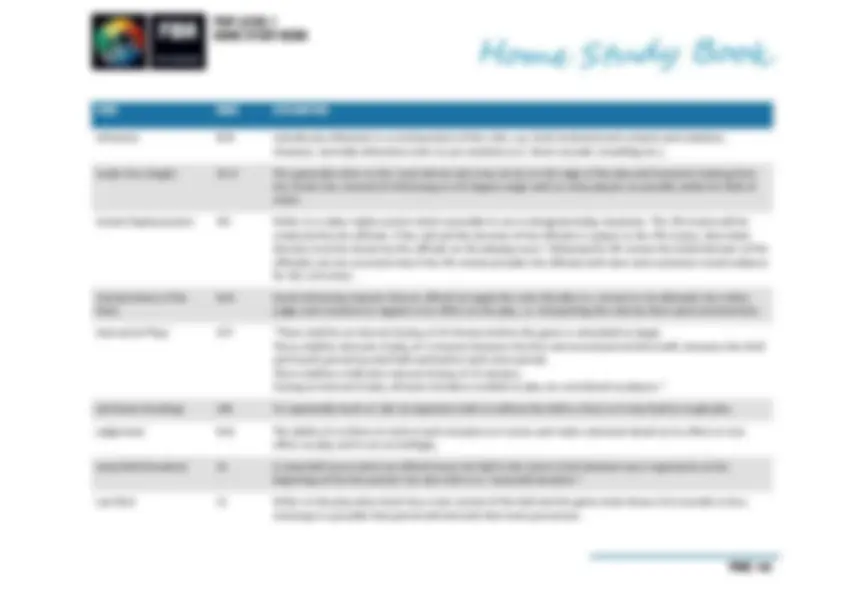
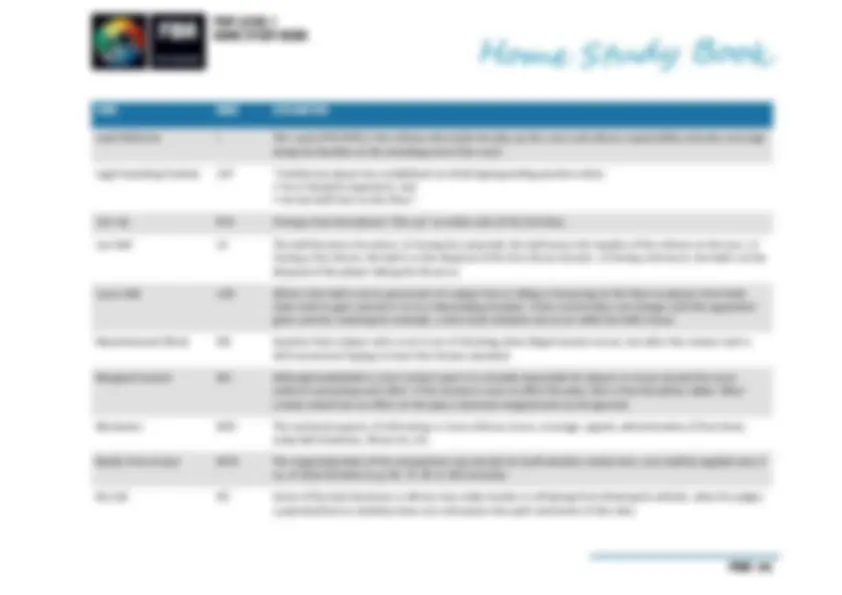
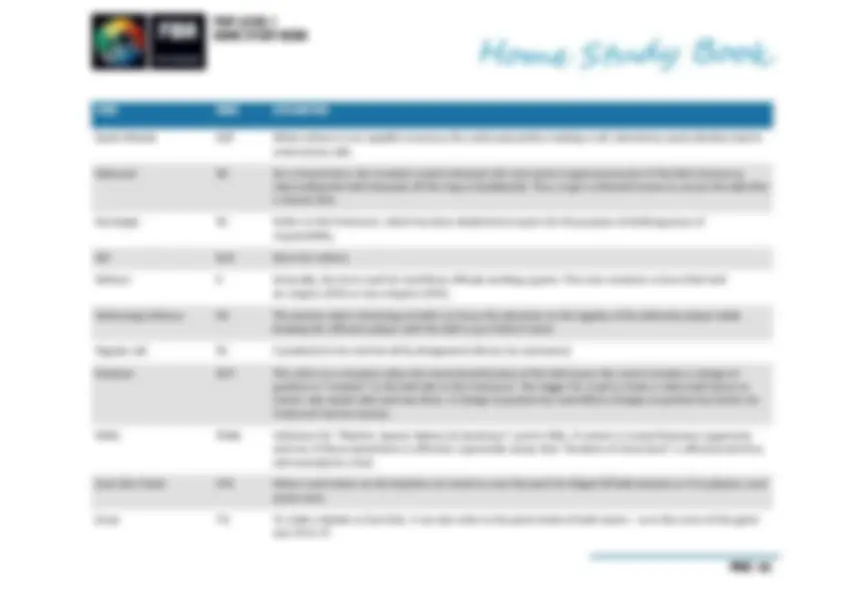
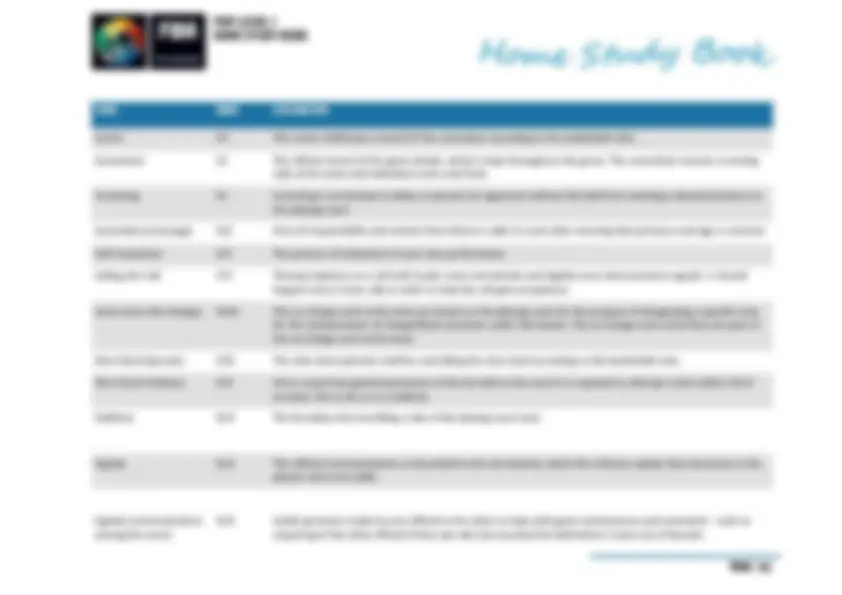
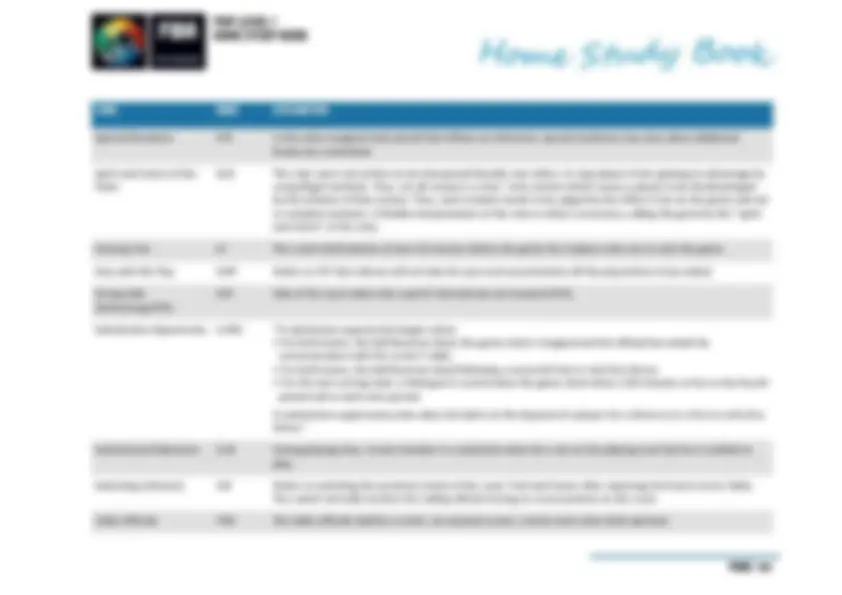

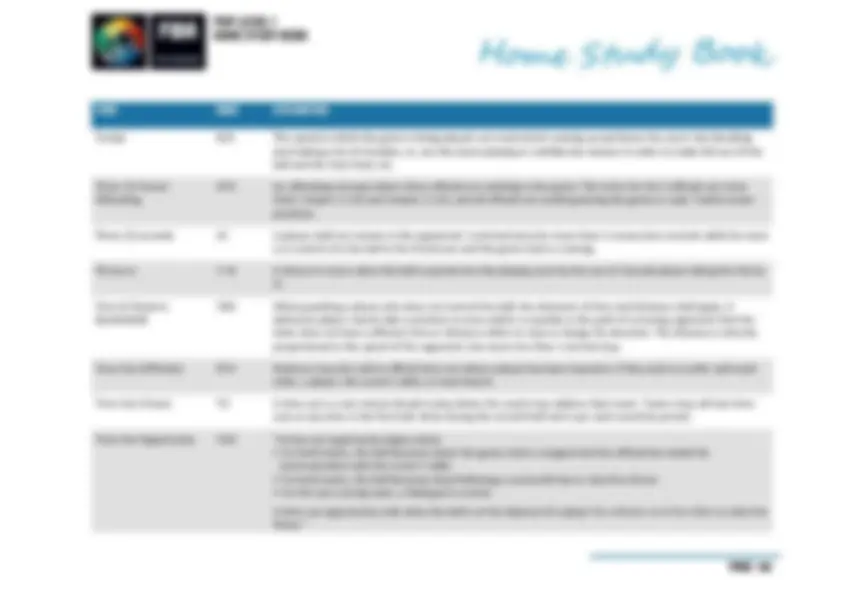
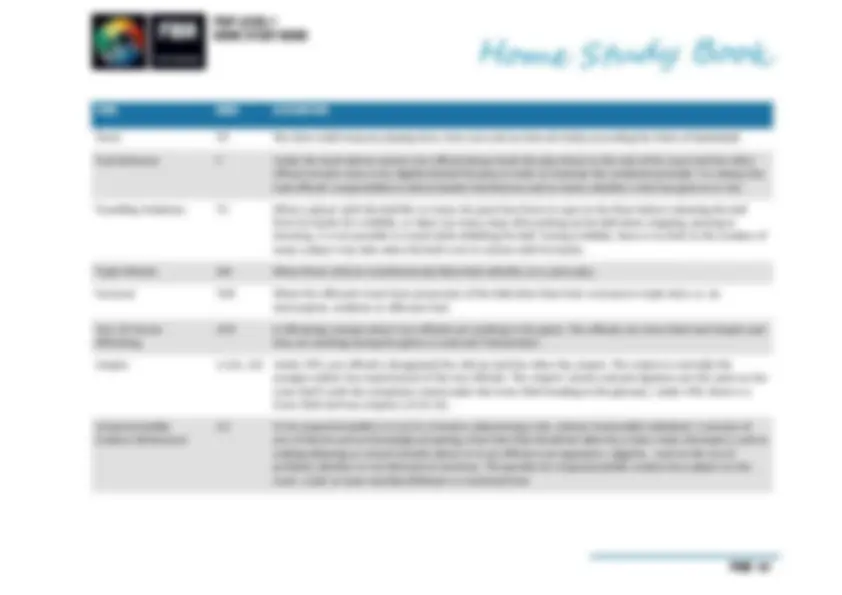
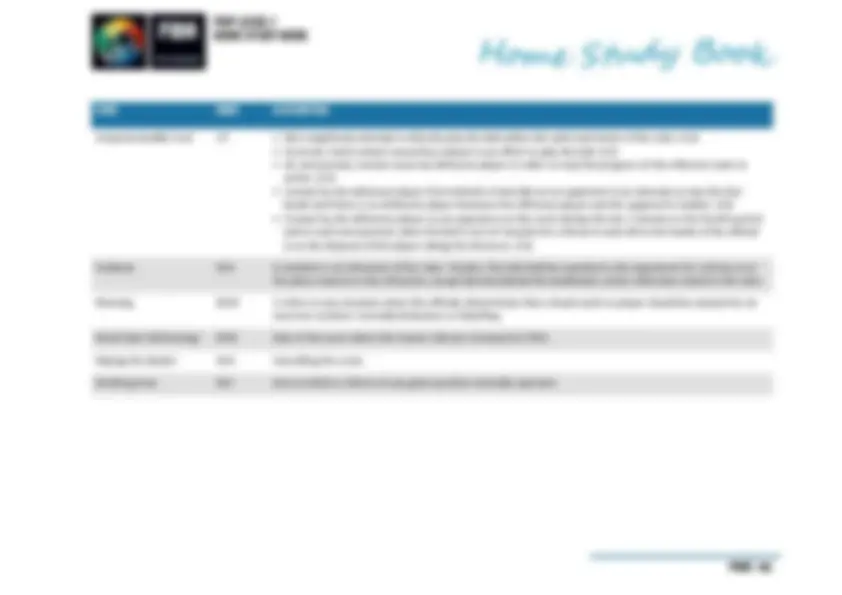
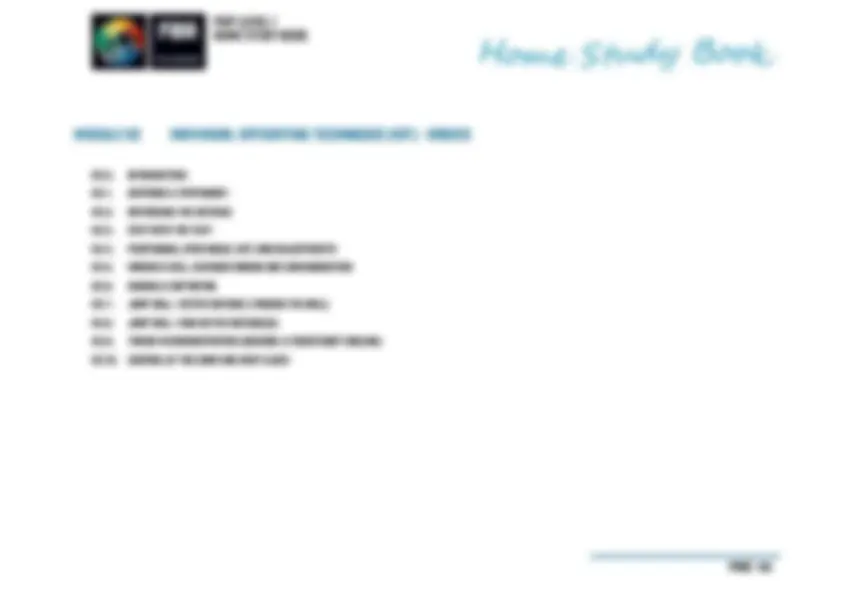
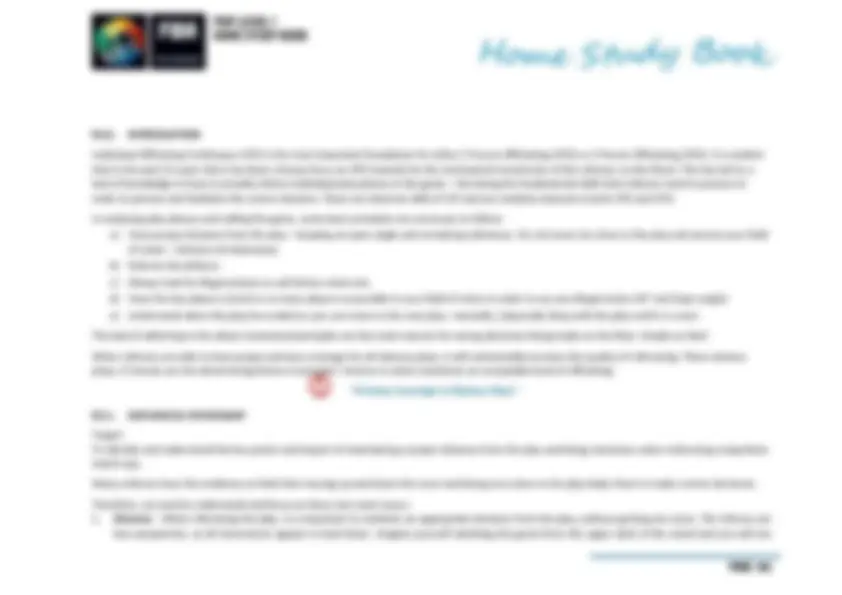
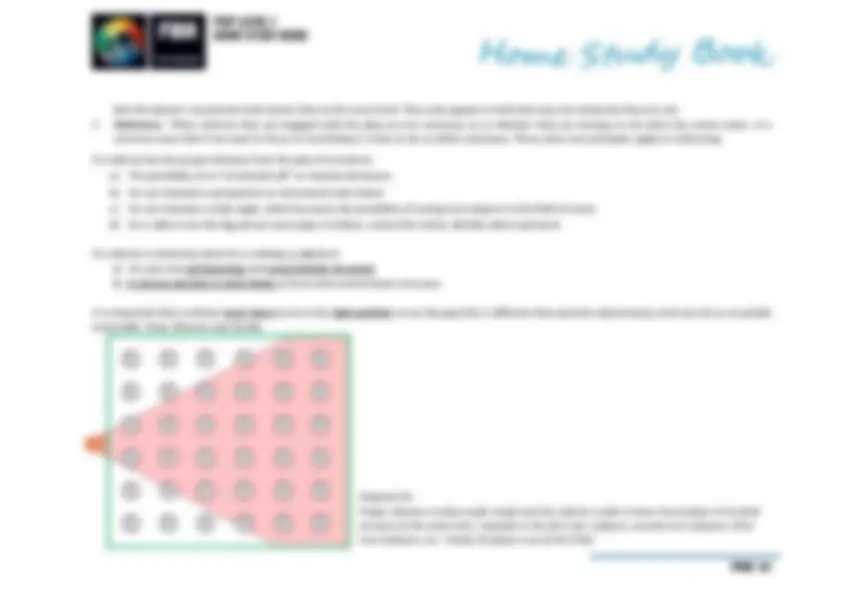
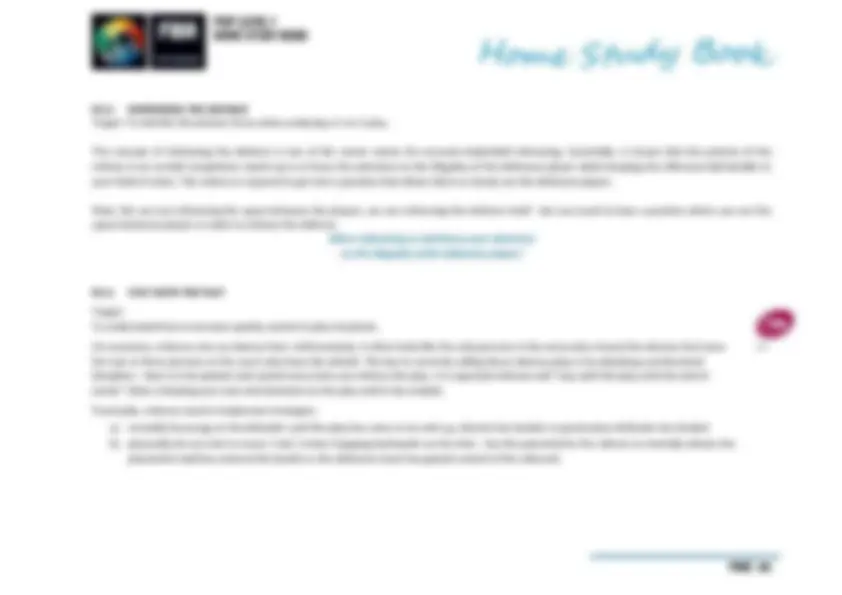
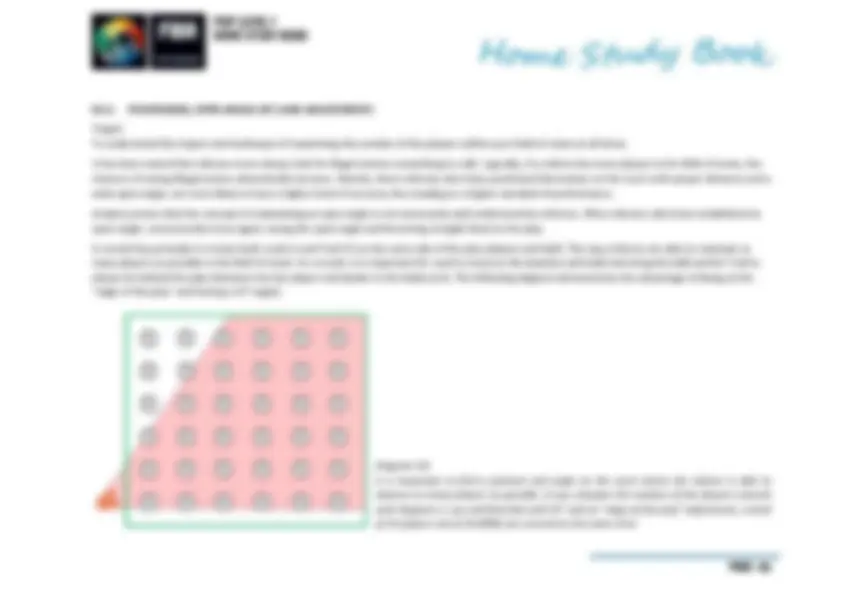
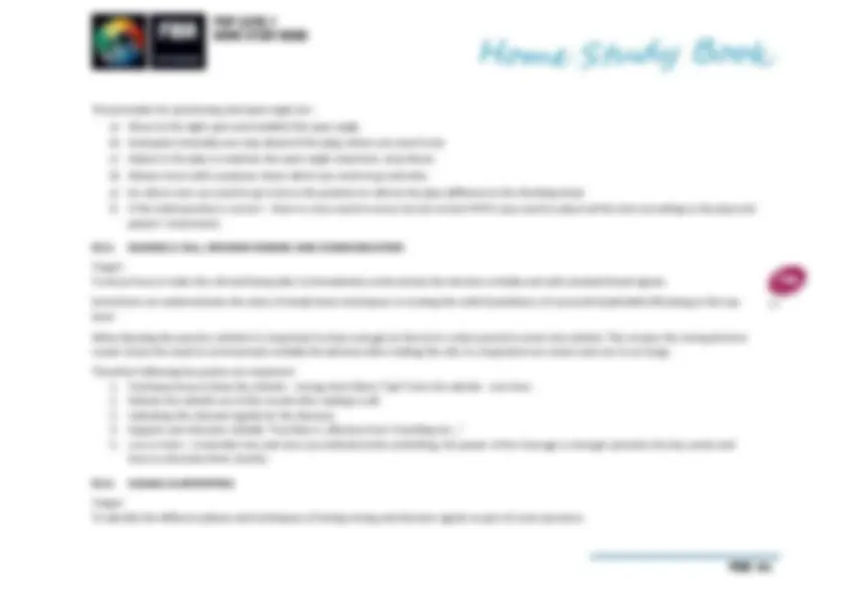
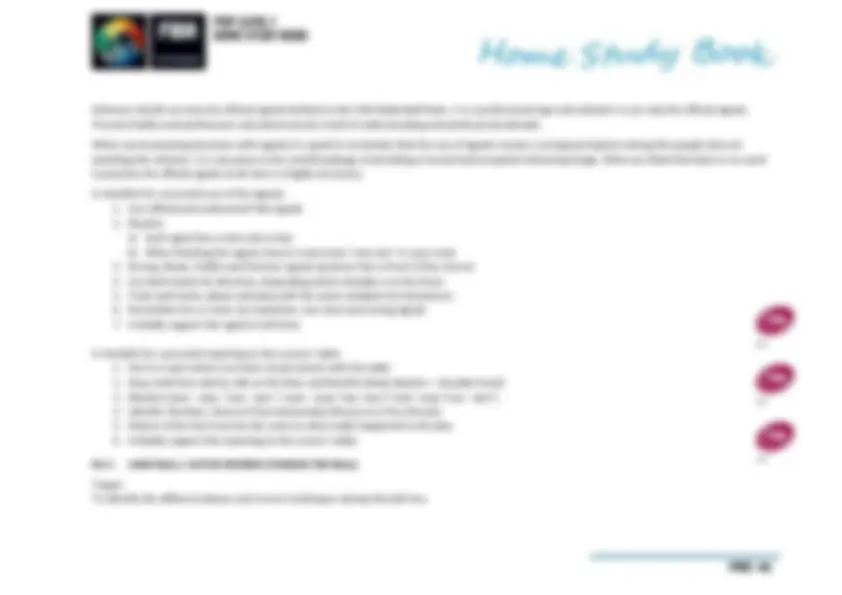
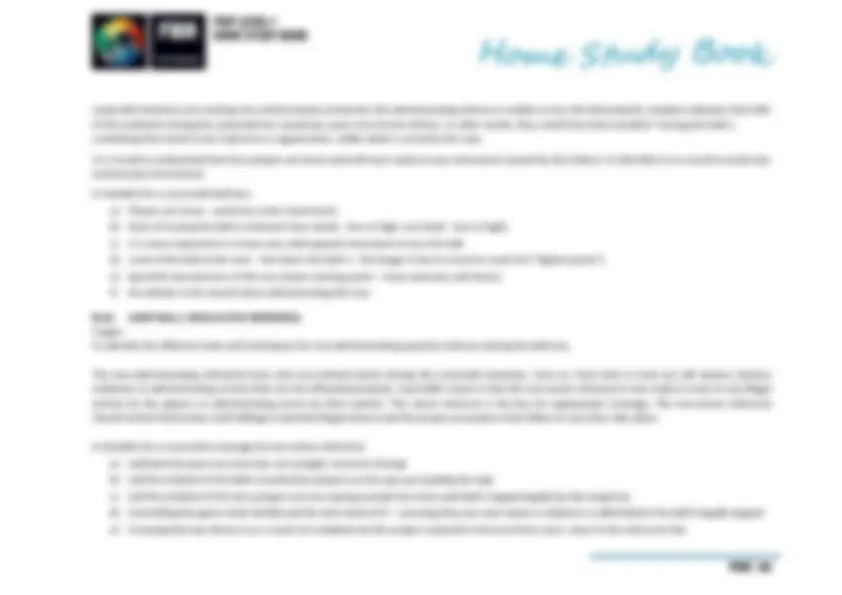
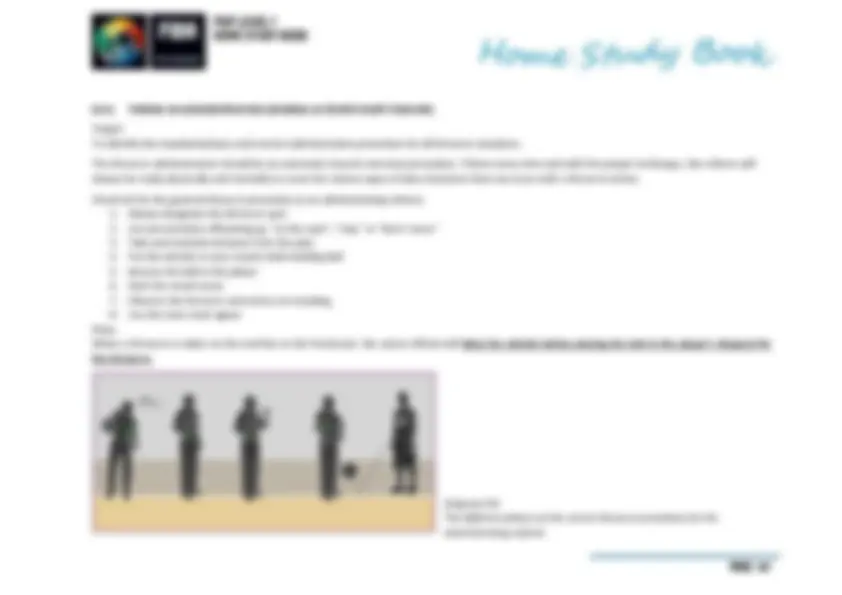
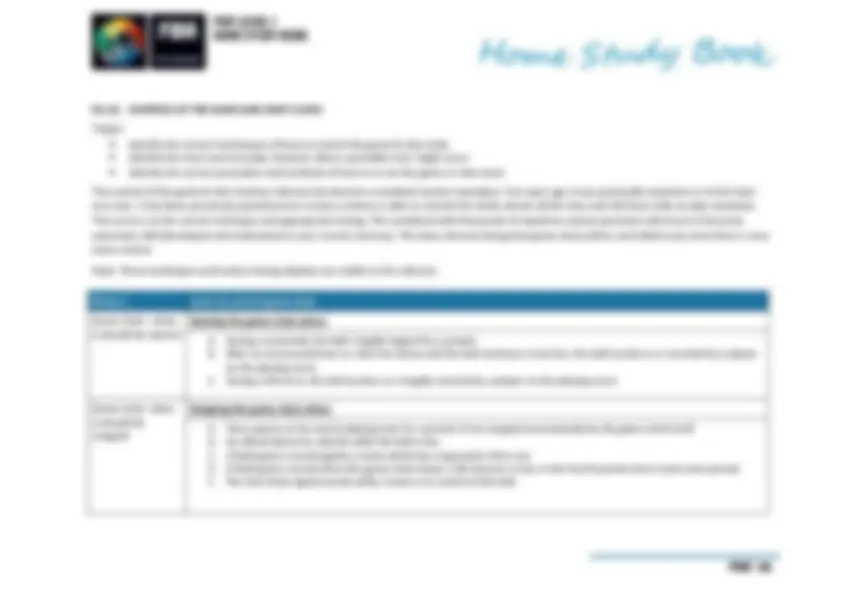
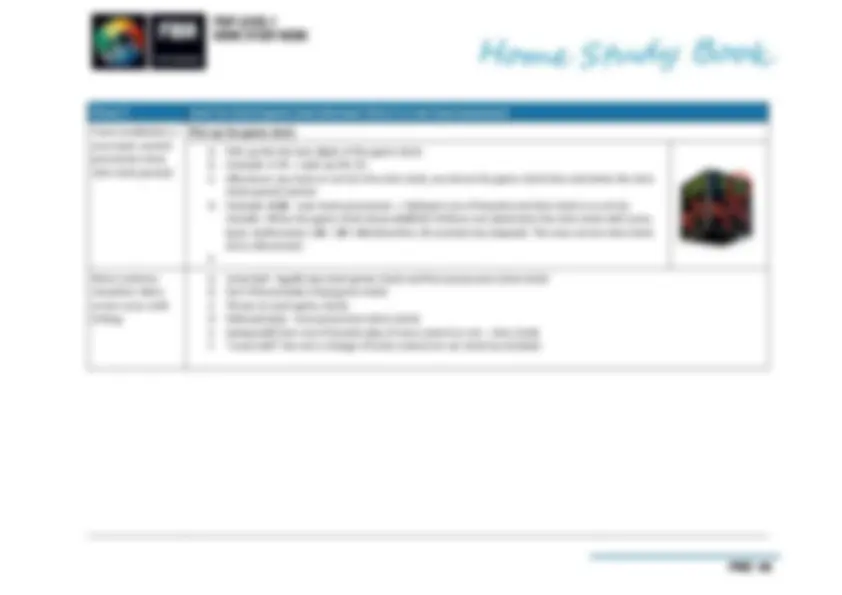
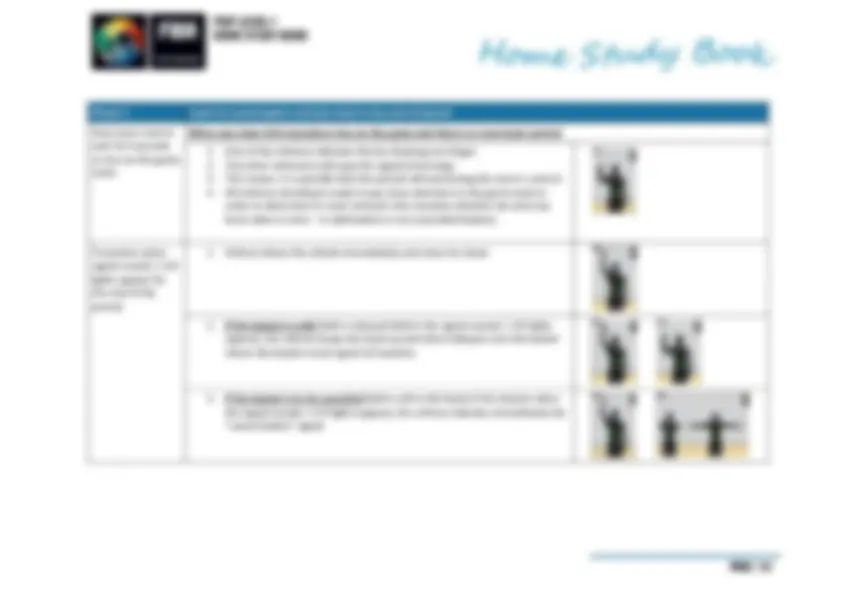
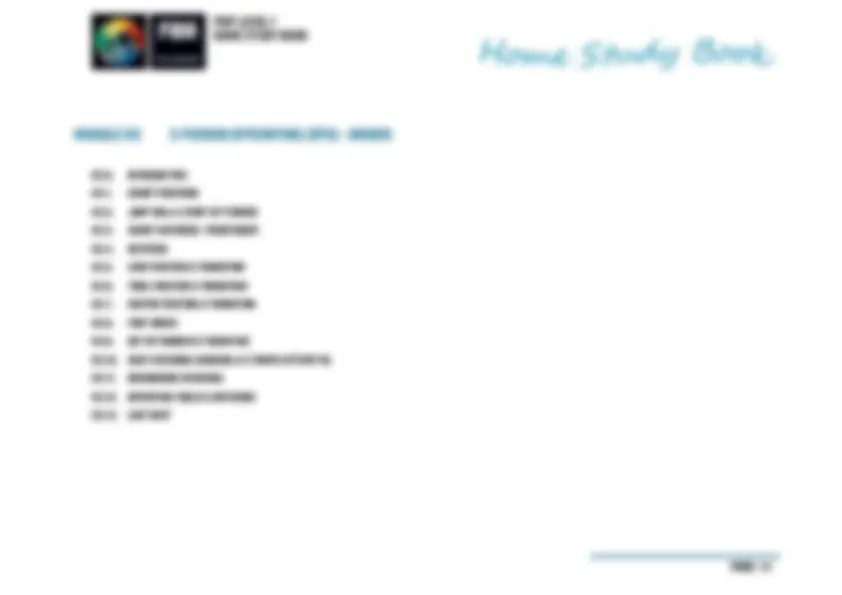
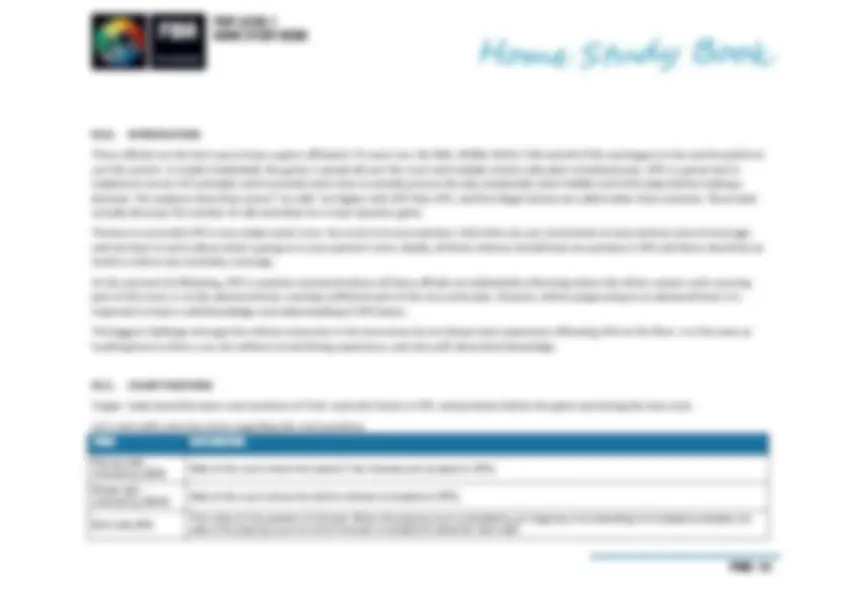
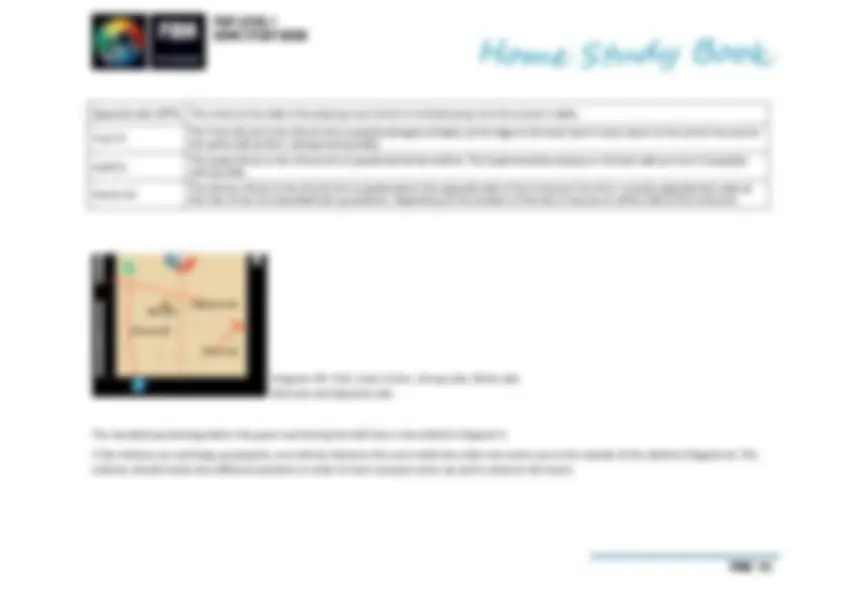
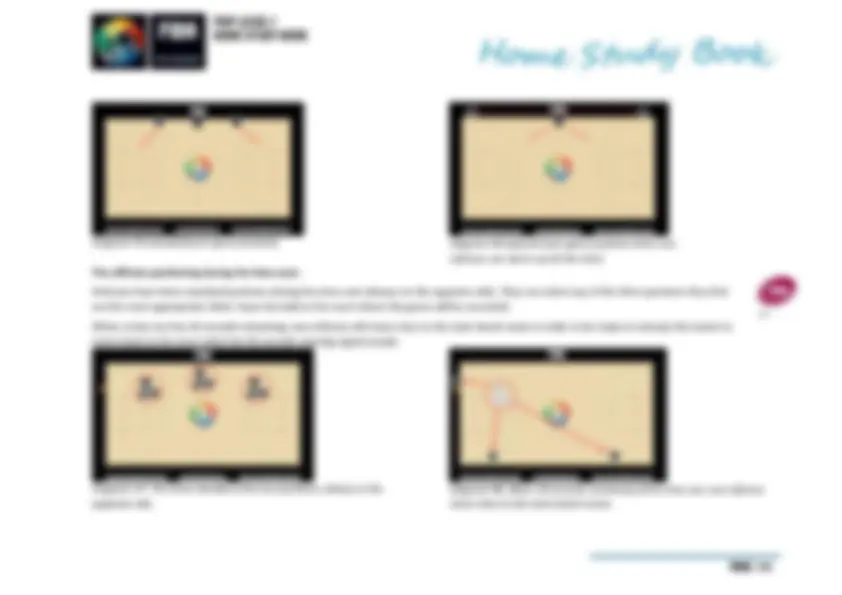
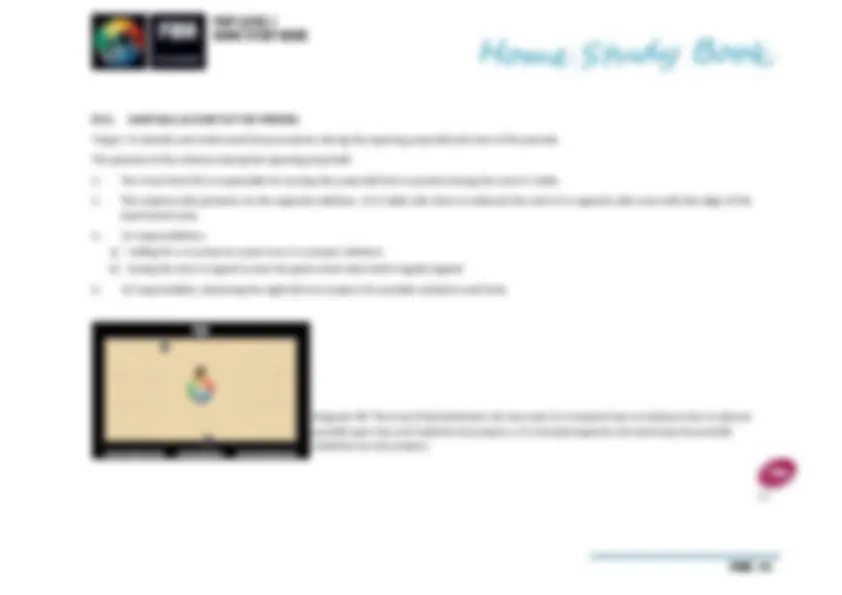
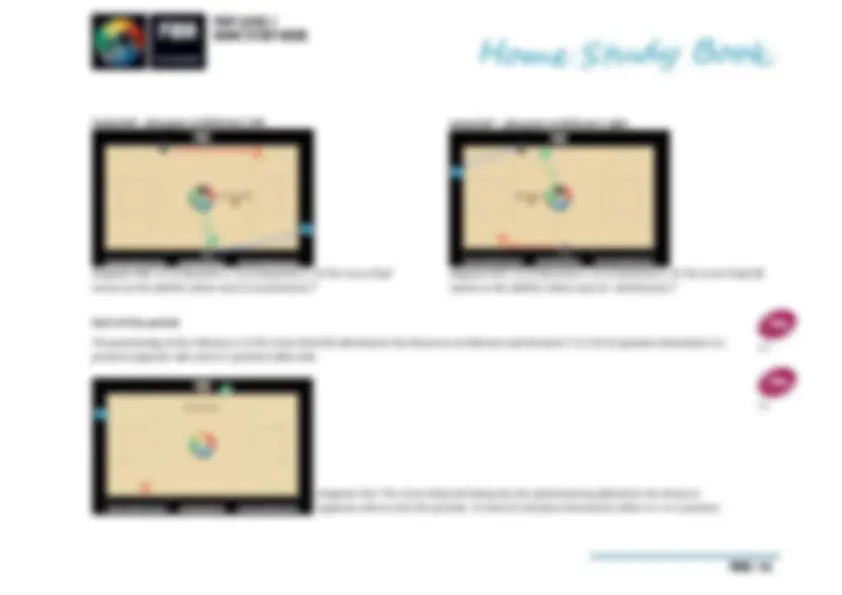
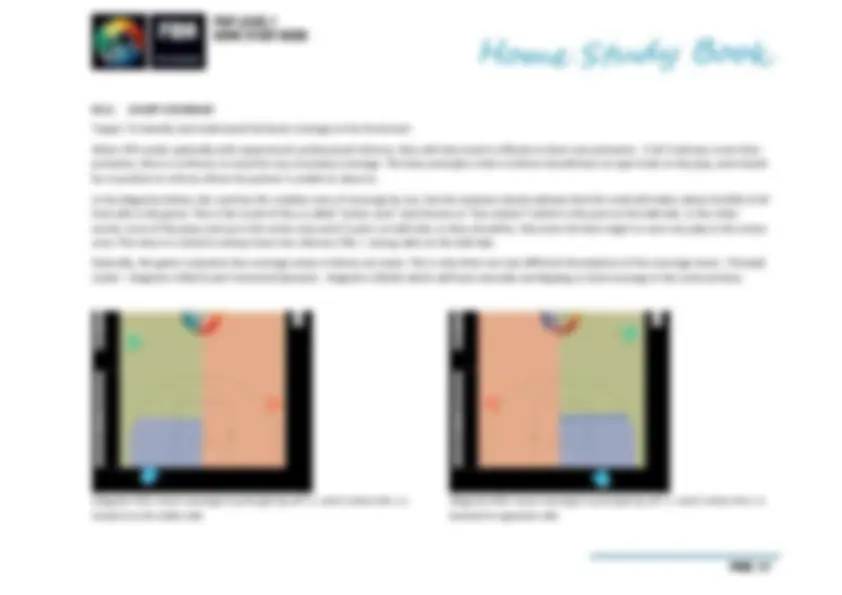
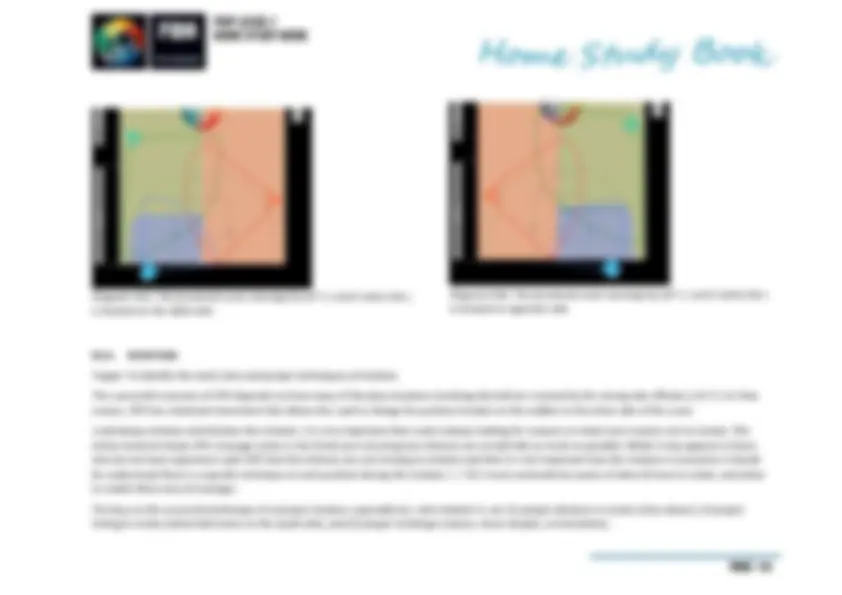
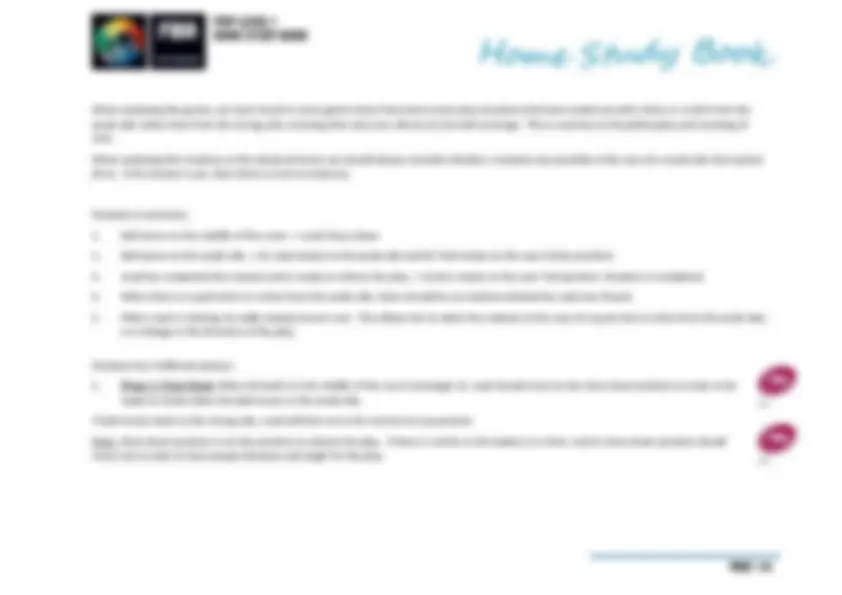
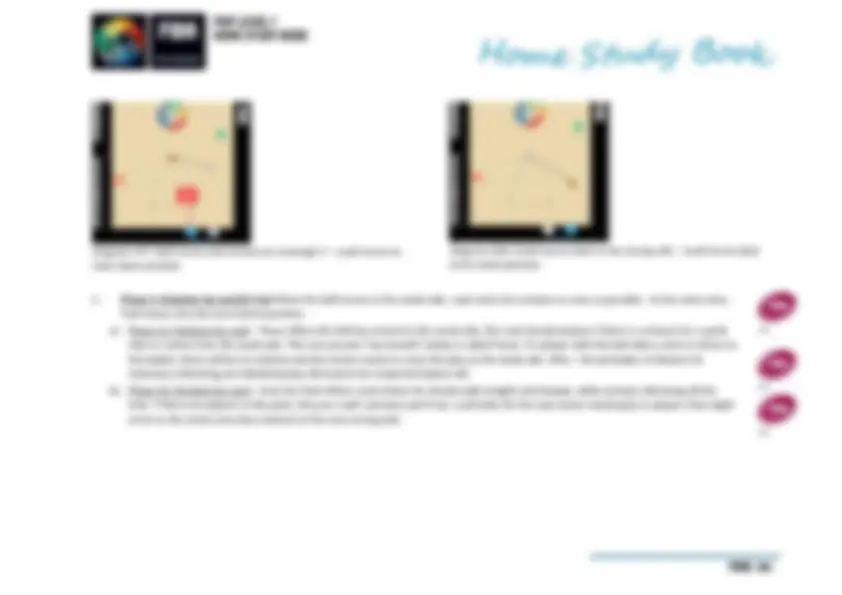
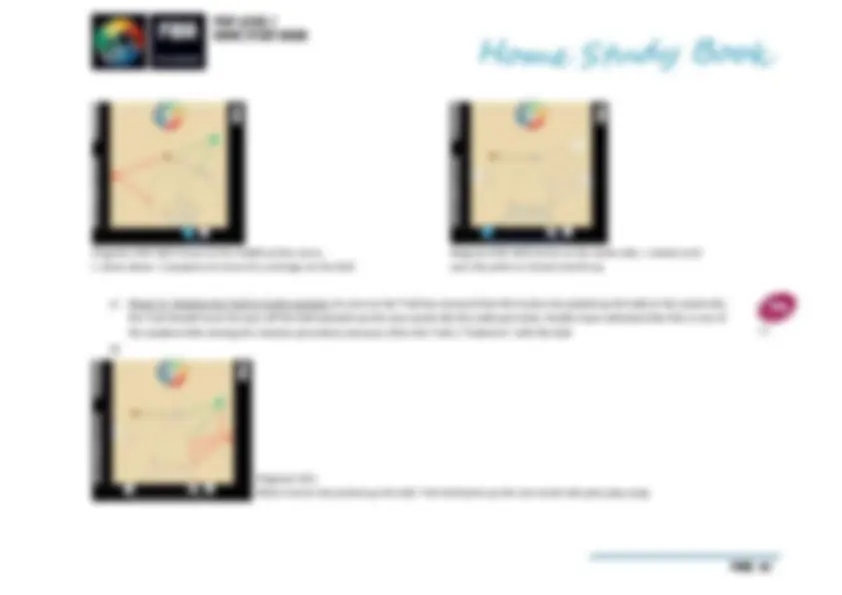
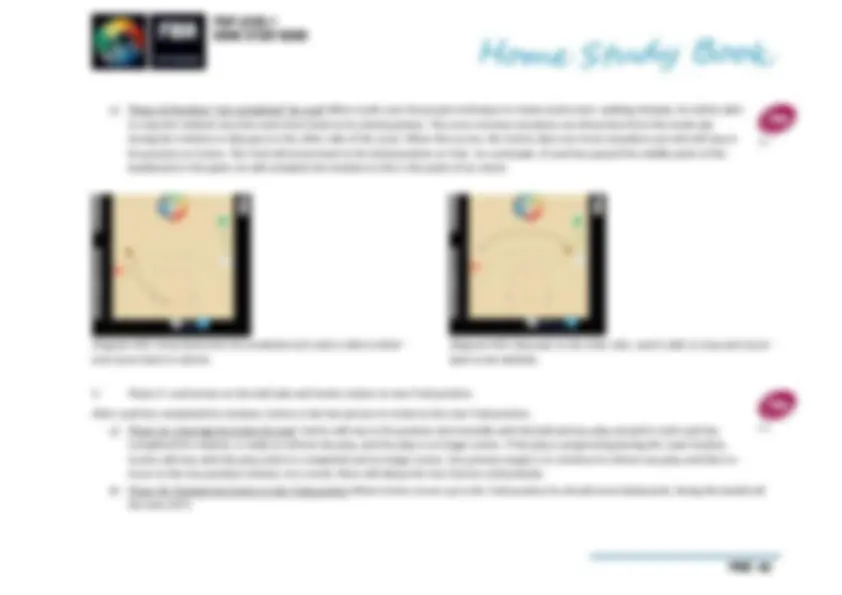
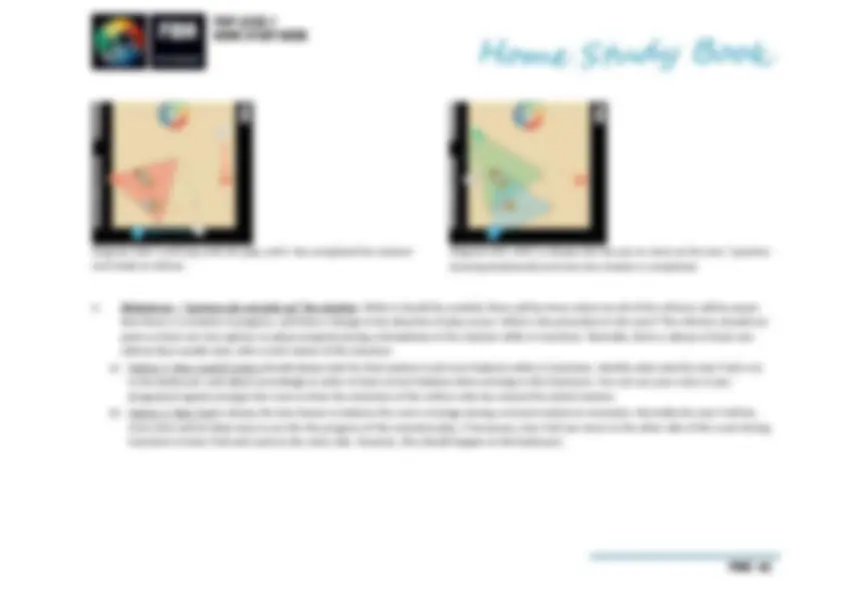
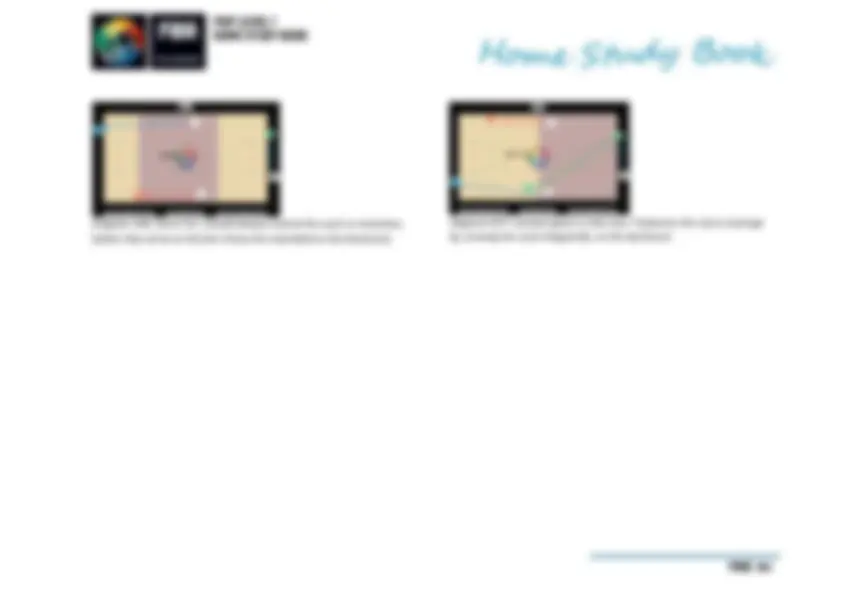
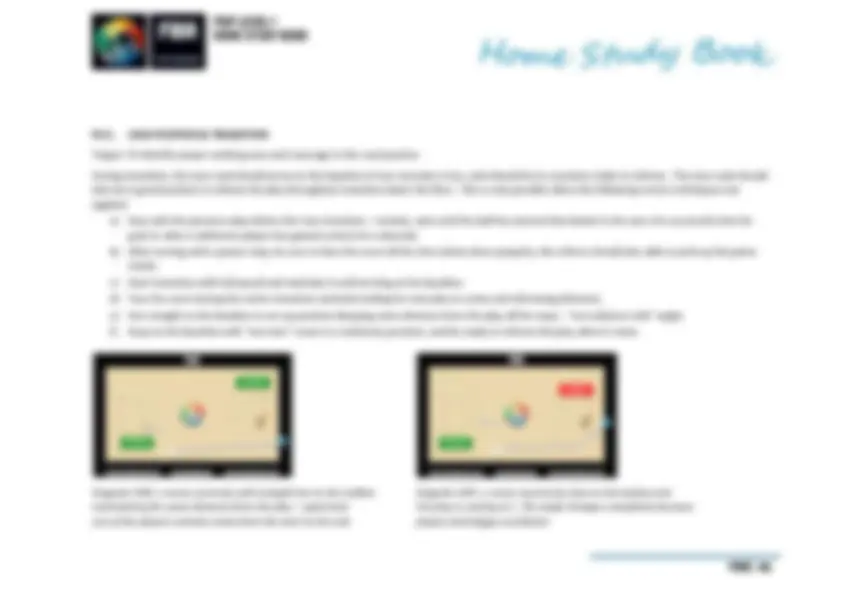
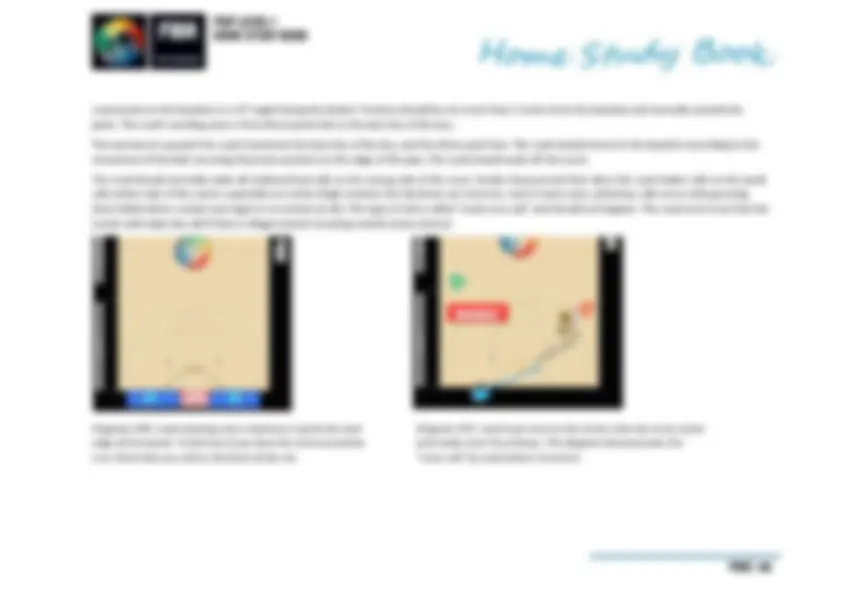
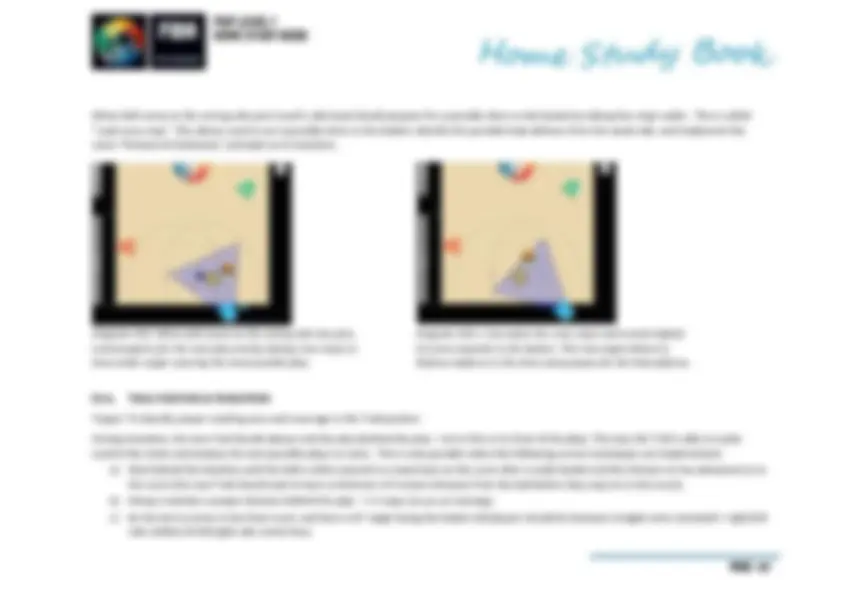
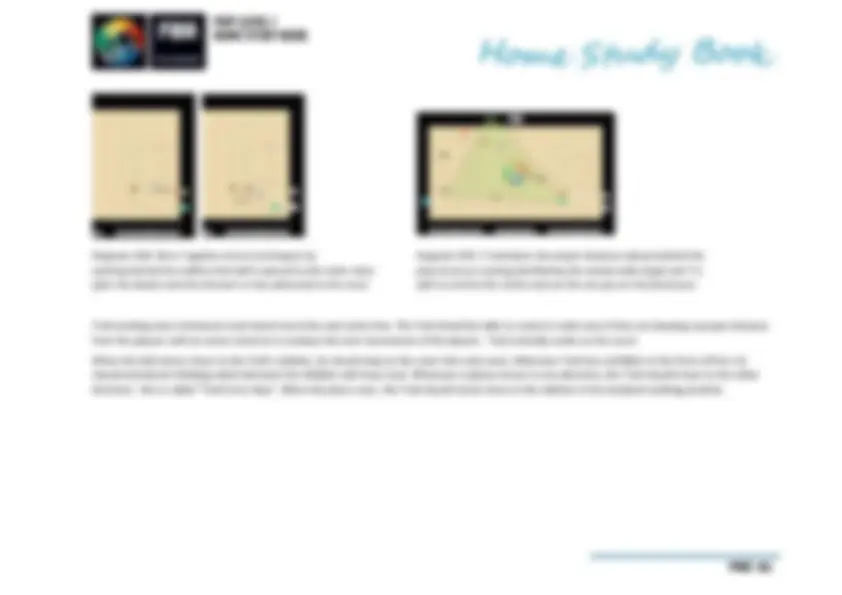
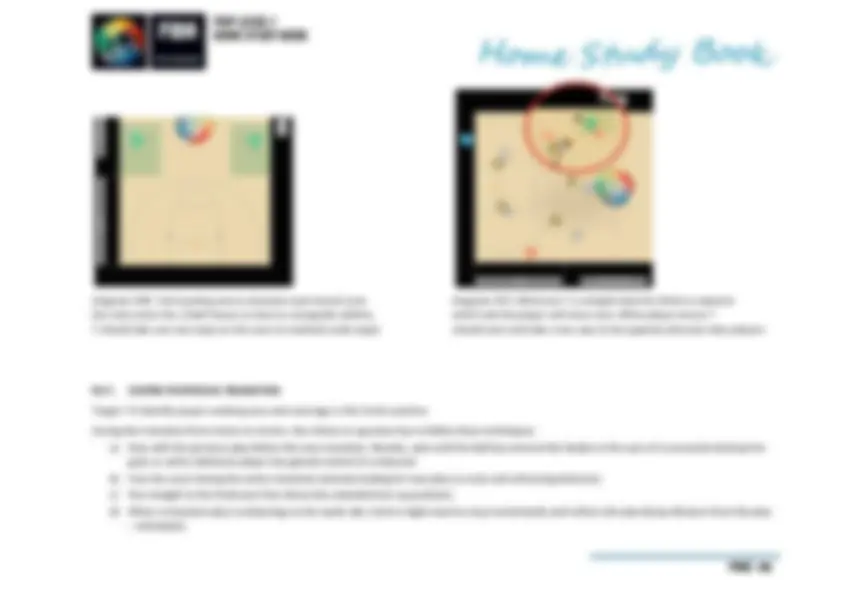
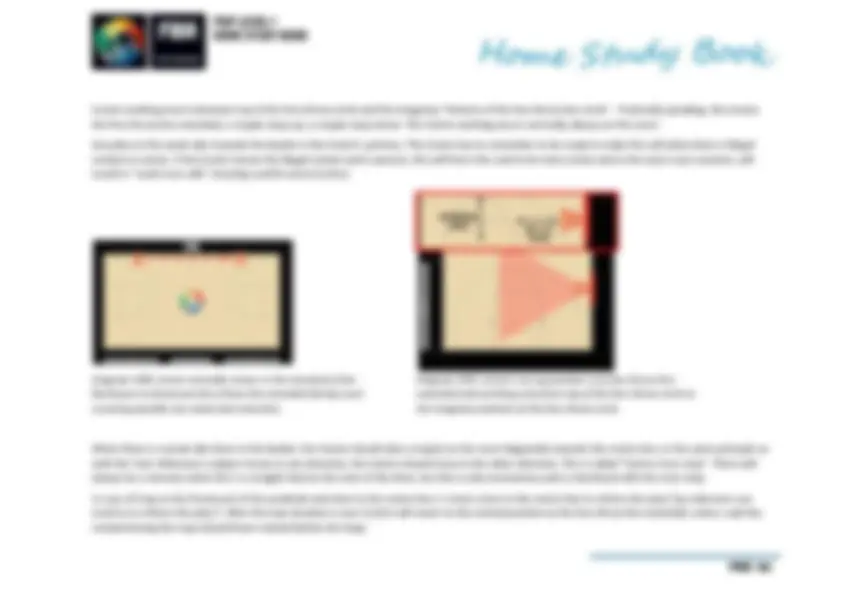
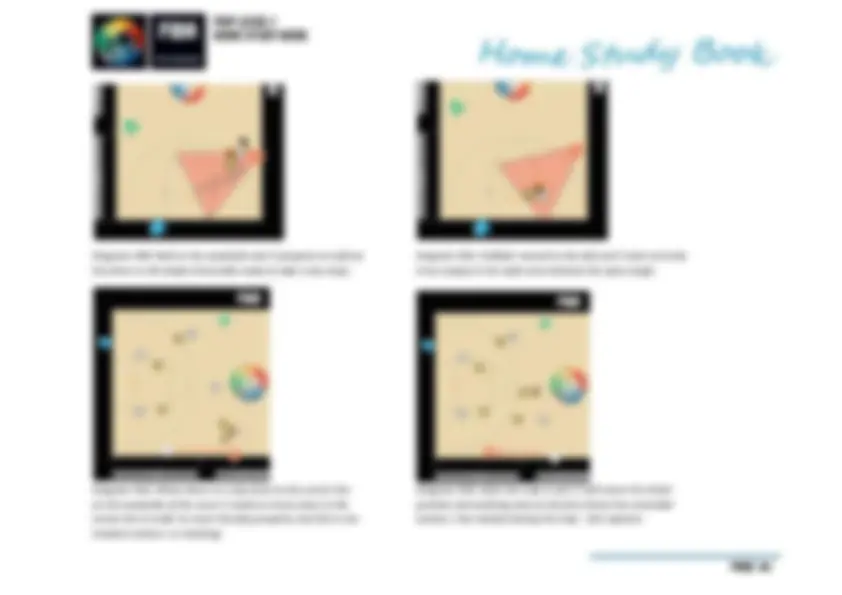

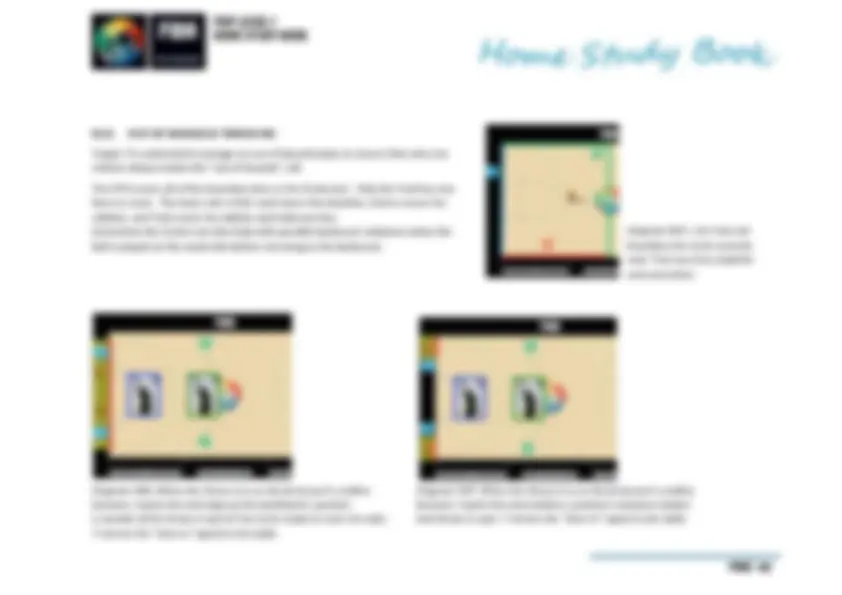
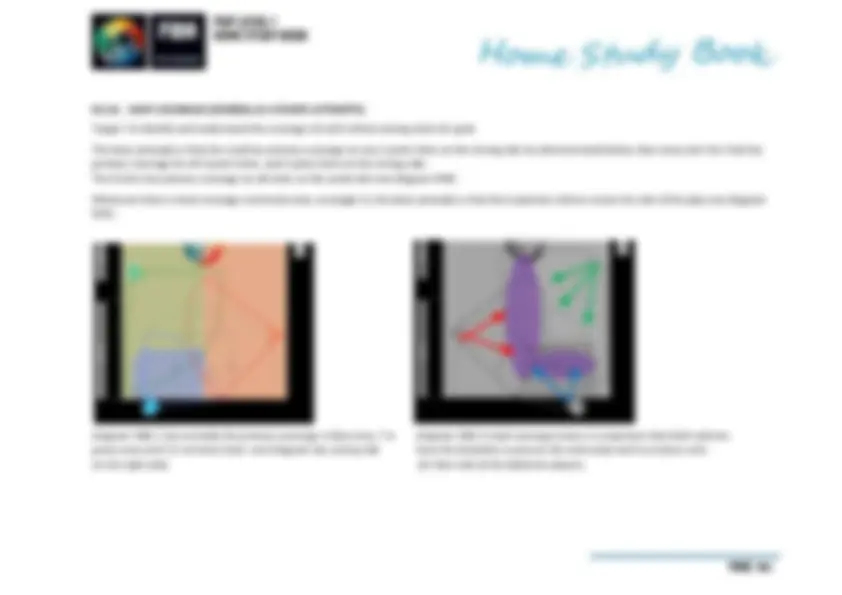
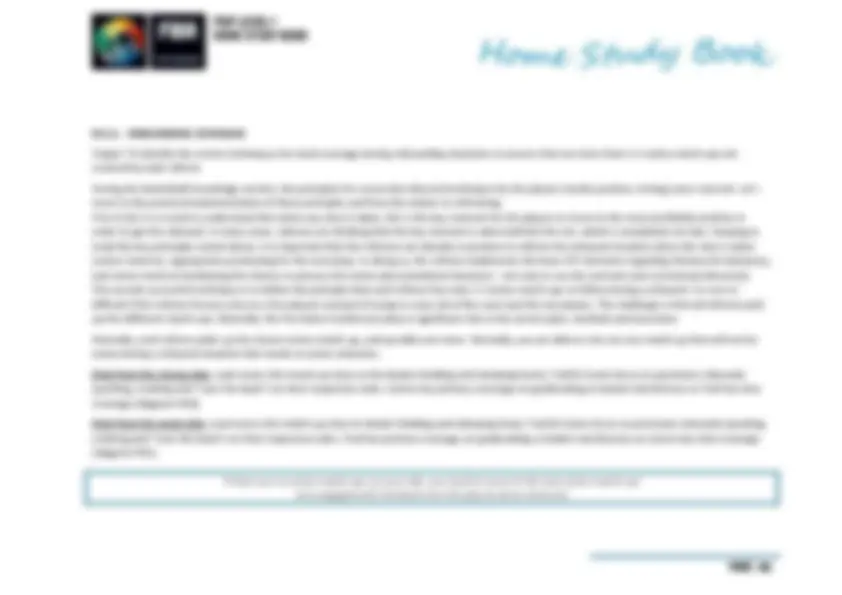

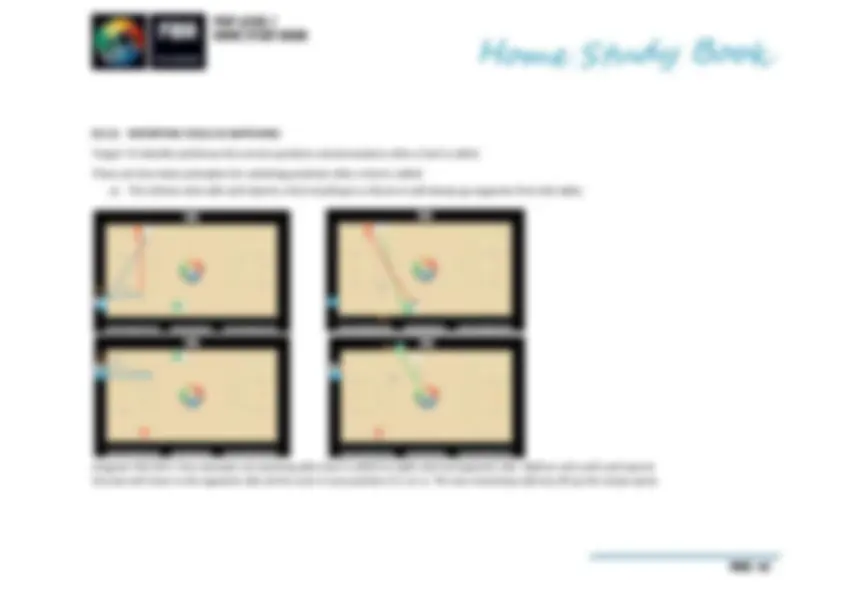
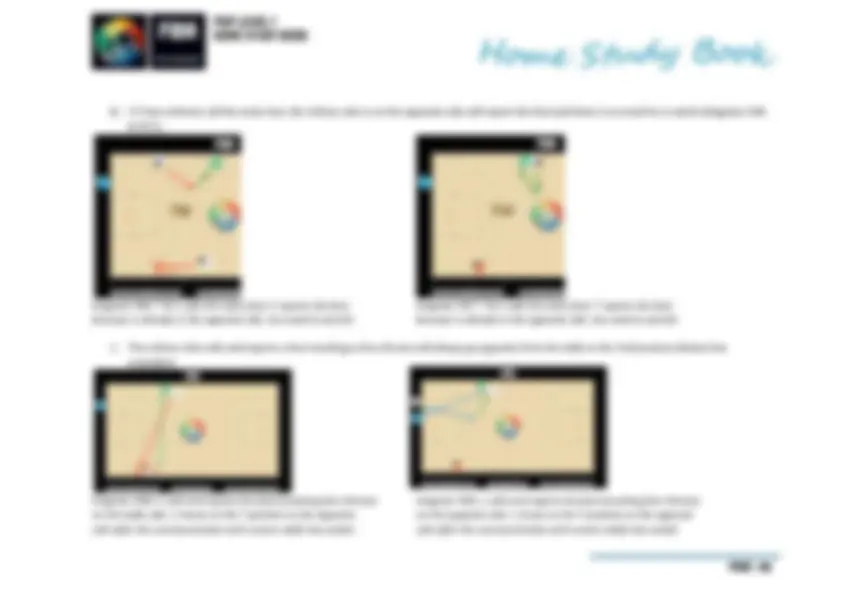
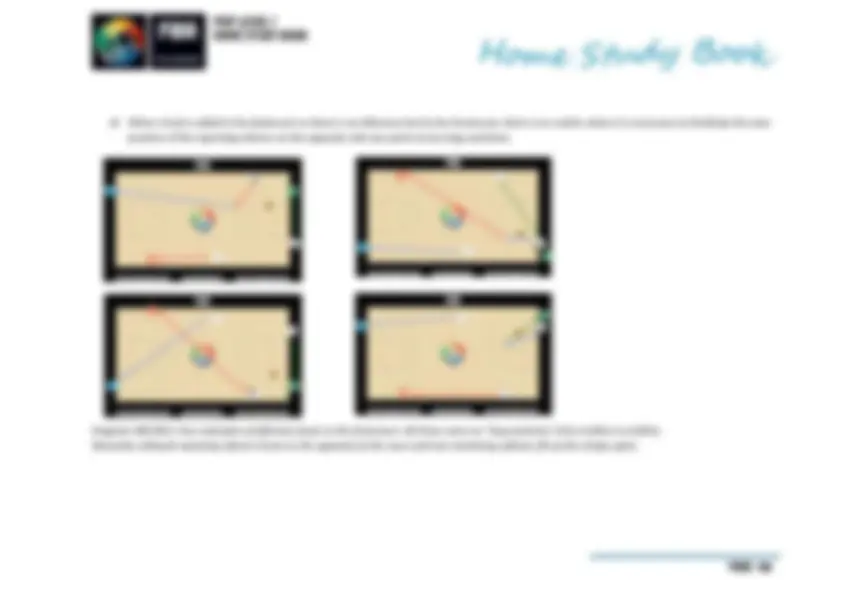

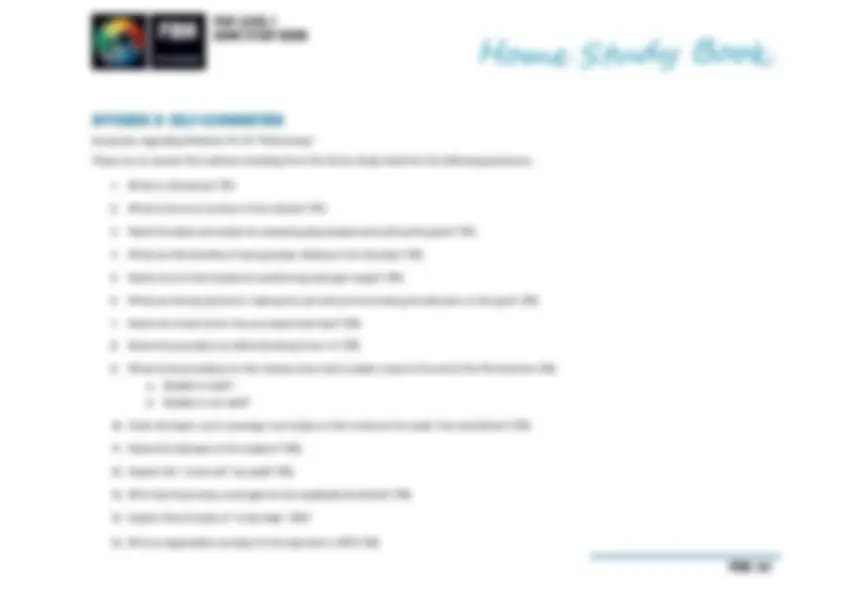


Study with the several resources on Docsity

Earn points by helping other students or get them with a premium plan


Prepare for your exams
Study with the several resources on Docsity

Earn points to download
Earn points by helping other students or get them with a premium plan
Community
Ask the community for help and clear up your study doubts
Discover the best universities in your country according to Docsity users
Free resources
Download our free guides on studying techniques, anxiety management strategies, and thesis advice from Docsity tutors
An in-depth analysis of the roles and responsibilities of referees in basketball, focusing on their court positions, coverage, and mechanics. It covers various play situations, court positions during time-outs and the start of the period, jump ball situations, and the importance of proper rotation and communication between referees. It also emphasizes the importance of maintaining a clear field of vision and being aware of the players' movements and actions.
What you will learn
Typology: Lecture notes
1 / 67

This page cannot be seen from the preview
Don't miss anything!




























































Basketball as a game is progressing every day. It is a natural environmental development process that takes place unconditionally and it is called evolution. The game and more so refereeing is completely different from 10 years ago. Presently, top level refereeing is improving faster than the game itself and higher standards of performance are expected every year. The present pace causes us to adopt a motto of: “What was considered exceptionally good yesterday, is considered standard quality today and below average quality tomorrow”. This doctrine has been written to provide prospective FIBA Referee Instructors with information about effective referee education practices and key topics for the development of successful basketball referees. It is intended, that as part of the FIBA Referee Instructor Program (FRIP), successful completion of Level 1 will lead to a FIBA Referee National Instructor’s licence. It has been prepared for those with some instructional experience wishing to enhance their approach to referee training and for those with a wealth of knowledge about refereeing, who wish to develop their instructional key points and practical delivery. It is divided into three modules and deals with topics such as Basketball Officiating, Individual Officiating Techniques and basic 3 Person Officiating. The most important pre-requisite is to have an open mind and a willingness to analyse your strengths and weaknesses whilst being able to adopt new approaches and practices. The program promotes home study, so that you can work through it in your own time and at your own pace. It is interactive in nature, so you will need writing materials. Allow at least a few hours to complete the online module. Working through this program will help you prepare your educational session focusing on key topics relevant to basketball refereeing education.
Module R1 Introduction & General .................................................................................................................................................................................. 137 Module R2 Individual Officiating Techniques (IOT) - Basics ............................................................................................................................................. 159 Module R3 3 Person Officiating (3PO) - Basics ................................................................................................................................................................. 171 APPENDIX A: Self-Examination ............................................................................................................................................................................................ 201
Generally, sports officiating is challenging and more so in the game of basketball – especially where ten athletic players are moving fast in a restricted area. Naturally the game has changed and the court has actually become larger, not in actual court size but in the playing and refereeing sense. Play situations are spread all over the court with every player able to play in almost every position. Naturally this sets a new requirement for basketball refereeing. It is good to remember that improving daily should not be considered as actual progress but rather is only designed to keep pace with the game’s development – this is called evolution and this will occur regardless if we want it or not. Sometimes there is a tendency to define basketball officiating as a very complex combination of various skills. It is true it requires many abilities by the referee, but the bottom line is that all these skills aim to achieve one thing - being ready to referee the play or handle situations that may arise during the game. All the training should focus on game preparation to assist referees to address various situations in games. Refereeing is: Anticipate what will happen — Active mind-set Understand what is happening — Basketball knowledge React properly for what has happened — Mental Image Training R1.2. IMAGE OF AN ELITE BASKETBALL REFEREE FIBA has one golden rule when it comes to prioritising for referee training for FIBA games - Game Control. That is ensuring a smooth running and dynamic game where players are able to showcase their basketball skills. This is the image FIBA is looking for. The two or three appointed referees are the ones who are responsible for this game control. It is good to define and remember that game control is different to game management. Ultimately, it is the Referees that are in charge of the game. They define what is allowed and what is not – nobody else. Having said that, it is equally important that referees look and act like they are in charge. Referees should give a non-verbal message that they are ready and able to make decisions. The core function of refereeing is decision making. Referees need to feel comfortable in making decisions without hesitation in the decision making process. Of course, the correctness of these decisions can be analysed after the event and so referees must demonstrate confidence and trust or at the very least present so that others view them this way (perception).
Therefore, FIBA has added the topic of “court presence” to its training program. It includes mental training with an “I am in charge” concept. This will be combined with a physical training plan to create an image of a strong and athletic body, fitting into the image of professionalism and promoting game control. “Controlling is an attitude” R1.3. BASIC BASKETBALL OFFICIATING TERMINOLOGY TERM ABBR Explanation 45° (Forty five degrees) 45° This refers to the preferred angle of the referees' stance, especially in Lead and Trail positions and in some cases by Center as well. Referees in L and T position will normally face the basket and maintain a 45° angle in order to keep in his field of vision as many players as possible. The Center referee's basic stance is generally flat with his back to the sideline, but he will normally adjust position to approximately 45° during weak side drives. Act of Shooting AOS A shot for a field goal or a free throw is when the ball is held in a player’s hand(s) and is then thrown into the air towards the opponents' basket. A tap and a dunk are also considered as shots for a field goal. Action Area AA Action Area may involve players with or without the ball. Knowledge on various play situations (pick & roll, screening, post-ups, rebounding) will help referees identify Action Areas in their primary, or when extending or expanding coverage. Active Mindset AMI Refereeing is nothing but being ready. Good referees are constantly analysing the movements and actions of the players in order to be in position to see something illegal. Look for reasons to call (illegal). Active Referee AR The referee who hands the ball to a foul shooter or player for a throw-in, or to administer the jump ball to start the game. Alternating Possession AP Alternating possession is a method of causing the ball to become live with a throw-in rather than a jump ball. Alternating Possession Arrow APA The team entitled to the alternating possession throw-in shall be indicated by the alternating possession arrow in the direction of the opponents’ basket. The direction of the alternating possession arrow will be reversed immediately when the alternating possession throw-in ends.
Basket Interference BI "Basket interference occurs when:
Close Down CD The position of the Lead where he should move before actual rotation starts. Closed Angle CA A stacked or straight-lined view of the action area in a referee’s primary / secondary coverage area. Commissioner COM The commissioner shall sit between the scorer and the timer. His primary duty during the game is to supervise the work of the table officials and to assist the referee and umpire(s) in the smooth functioning of the game. Consistency N/A A referee who interprets play situations and criteria exactly the same way throughout is said to be consistent. Contact Foul N/A A personal foul resulting from a player illegally touching another player and putting him at a disadvantage. Control of the Ball COB A team is said to be in control of the ball when a player of that team first has the ball in their possession inbounds or when the ball is placed at their disposal for a throw-in. It extends until the time a shot is taken, a whistle blows, or a player from the opposition side gains control. A player is in control of the ball when they are holding a live ball in their hands or dribbling it, or when the ball is at their disposal for a throw-in or a free throw. Correctable Errors CE "Officials may correct an error if a rule is inadvertently disregarded in the following situations only:
Eight (8) Seconds Violation 8S When a team gains new possession of the ball in their backcourt it has eight seconds to advance the ball over the centre line. Ejection N/A When a referee orders a player off the court for a disqualifying foul or for a second technical or unsportsmanlike foul on the same player. Elbowing ELW Any hit or contact made with the elbow that imply a foul. Also - An action of excessive swinging of elbows by and offensive player with the ball (without contact). EOG EOG End of the Game EOP EOP End of the Period Extended Coverage EXCE At the highest level of officiating, an official has to be able to extend coverage on two different play situations at the same time Fake being fouled FKF Fake (Refereeing) is any action where a player pretends being fouled or makes theatrical exaggerated movements in order to create an opinion of being fouled and therefore gaining an unfair advantage. Examples of faking are: falling backwards, falling down, moving the head backwards, etc. simulating contact by an opponent without actually being touched, or being contacted only in a marginal way (see “Flop”). Fantasy Call (Phantom Call) FAC Describes the situation when a referee makes a call for foul and actually there was not even contact on the play (problem with self-discipline / "I don't see, I don't call"). This is different than Marginal Contact that is incorrectly called as a foul (problem with criteria). Fast Break FB A quick change of the direction of the ball as the defensive team gains possession of the ball through a steal, rebound, violation or made shot and quickly attacks to the other end of the court hoping to gain numerical or positional advantage over the other team and a resultant high percentage shot. Feel for the Game N/A The referee’s ability to be sense what’s going on the court: are tempers getting high; is the pace fast; is there too much contact occurring, etc.? A referee with a good feel for the game is in the best position to maintain game control. Fighting FGT Fighting is physical interaction between 2 or more opponents (players and/or team bench personnel).
Five (5) Fouls 5F A player who has committed 5 fouls shall be informed by an official and must leave the game immediately. He must be substituted within 30 seconds. Five (5) Seconds Violation 5S Once a player has the ball at his disposal for a throw-in or a foul shot he has five seconds in which to release the ball. Also when a closely guarded player is in control of the ball, he has five seconds to pass, shoot or dribble - not to do so is a violation. A closely guarded player who is dribbling is not subject to a five second count. Flagrant Foul FF May be a personal or technical foul. It is always unsportsmanlike and may or may not be intentional. If personal, it involves violent or savage contact, such as striking with the fist or elbow, kicking, kneeing, or running under a player who is in the air, or crouching or hipping in a manner which might cause severe injury to an opponent. If it is a non-contact foul, it involves extreme and sometimes persistent vulgar and/or abusive conduct. Flop (Refereeing) FLO A sub-category of “Fake being fouled” is when a defensive player pretends or exaggerates an action in a charge/block situation simulating contact by an opponent without actually being touched, or being contacted only in a marginal way (See “Fake being fouled”). Foot (Kick) Violation FVI "A player shall not run with the ball, deliberately kick or block it with any part of the leg or strike it with the fist. However, to accidentally come into contact with or touch the ball with any part of the leg is not a violation. (Deliberate Foot Ball)" Foul N/A A foul is an infraction of the rules concerning illegal personal contact with an opponent and/or unsportsmanlike behaviour. Foul Lane N/A The restricted area at both ends of the court circumscribed by the foul line, foul lanes and baselines. Also called the “key” or "paint". Foul on no Act of Shooting FNAOS When a player is illegally contacted by the defence and foul is called, but not AOS.
Goal (field goal) FG A goal is made when a live ball enters the basket from above and remains within or passes through the basket. The ball is considered to be within the basket when the slightest part of the ball is within and below the level of the ring. Goaltending GT "Goaltending occurs during a shot for a field goal when a player touches the ball while it is completely above the level of the ring and:
Infraction N/A Literally any infraction is a contravention of the rules. e.g. fouls (technical and contact) and violations. However, normally infractions refer to just violations (i.e. three seconds, travelling etc.). Inside-Out (Angle) IN-O This generally refers to the Lead referee who may not be on the edge of the play and instead is looking from the Inside-Out, instead of refereeing at a 45 degree angle with as many players as possible within his field of vision. Instant Replay System IRS Refers to a video replay system what is possible to use in designated play situations. The IRS review will be conducted by the officials. If the call and the decision of the officials is subject to the IRS review, that initial decision must be shown by the officials on the playing court. Following the IRS review the initial decision of the official(s) can be corrected only if the IRS review provides the officials with clear and conclusive visual evidence for the correction. Interpretation of the Rules N/A Good refereeing requires that an official not apply the rules literally (i.e. contact is not allowed), but rather, judge each situation in regards to its effect on the play, i.e. interpreting the rules by their spirit and intention. Interval (of Play) IOP "There shall be an interval of play of 20 minutes before the game is scheduled to begin. There shall be intervals of play of 2 minutes between the first and second period (first half), between the third and fourth period (second half) and before each extra period. There shall be a half-time interval of play of 15 minutes. During an interval of play, all team members entitled to play are considered as players." Jab (hand-checking) JAB To repeatedly touch or 'jab' an opponent with or without the ball is a foul, as it may lead to rough play. Judgement N/A The ability of a referee to look at each situation as it arises and make a decision based on its effect or non- effect on play and to act accordingly. Jump Ball (Situation) JB A jump ball occurs when an official tosses the ball in the centre circle between any 2 opponents at the beginning of the first period. Can also refer to a "jump ball situation." Last Shot LS Refers to the play when team has a new control of the ball and the game clock shows 24.0 seconds or less, meaning it is possible that period will end with that team possession.
Obvious Play OP Plays that are clearly visible to most of the participants in the game, including referees, coaches, players and spectators. Referees must be correct in these type of situations 100% of the time with no room for error. Off the Ball OFB Concerns all aspects of play not directly involving the player with the ball and players closely adjacent to them. Offensive End N/A The end of the court to which a team attacks and attempts to score a basket (their front court). Official Basketball Rules Interpretations (OBRI) OBRI A document that FIBA publishes, which includes all official interpretations defined by FIBA. Official(s) N/A The officials shall be a referee and 1 or 2 umpire(s). They shall be assisted by the table officials and by a commissioner, if present. Officials' Signals N/A "The hand signals officials use to communicate their decisions and reporting fouls to the scorer's table. While reporting to the scorer’s table referees will verbally support the communication (in international games in the English language)." Open Angle OA Clear view of the action in a referee’s primary / secondary coverage area. Never leave an open look. Opposite Side OPS This refers to the side of the playing court which is furthest away from the scorer's table. Out-of-Bounds OOB That area outside of the playing court – radiating out from and including the boundary lines of the court. Outside-In (Angle) O-IN The preferred position of the Lead referee who is standing at a 45 degree angle and has as many players as possible within his field of vision. Palming (the ball) PLM See: carrying the ball. Pass N/A A method of moving the ball by throwing it from one offensive player to another. Pass-Off POFF A situation where a player has started his AOS and a foul is called, but he discontinues his shooting motion and ends up passing to his teammate. This is considered a regular and not AOS foul. Passive Referee PAR The referee who is not administrating free throw or a throw-in, or to not tossing the ball during the jump ball in the start of the game.
Patienced Whistle PW When referee is capable to process the entire play (start/middle/end) before making a call. Peripheral Vision PV To see widely to either side while looking straight ahead. Personal Foul PF A personal foul is a player’s illegal contact with an opponent, whether the ball is live or dead. Phantom Call (Fantasy Call) FAC Describes the situation when a referee makes a call for foul and actually there was not even contact on the play (problem with self-discipline / "I don't see, I don't call"). This is different than Marginal Contact that is incorrectly called as a foul (problem with criteria). Pick SC An offensive screen. Pivot Foot PFO When a player is in possession of the ball and is not dribbling they are allowed to rotate around one foot providing that foot remains on the same spot on the floor – thus a pivot foot. Player N/A During playing time, a team member is a player when he is on the playing court and is entitled to play. Pre-Game Conference PGC Before the start of important contests it is necessary for the referees to meet together to familiarise themselves and talk about their working mechanics and preparations for the game. Pre-Game Routines N/A The routine the referees go through prior to the actual commencement of the game. This includes checking the scoresheet, making sure the timer understands the timing regulations of that particular contest, etc. Preventative Officiating PRO Refers to actions by officials who prevent problems from occurring by communicating with players and/or coaches. It can happen during live ball (post, perimeter play) as well as during dead ball. Primary (Coverage) PCE Area of responsibility and actions that referee has to be able to cover always. Push-Off PO When an offensive player 'pushes off' to prevent the defensive player from playing or attempting to play the ball, or to create more space for himself. Pushing PU Pushing is illegal personal contact with any part of the body where a player forcibly moves or attempts to move an opponent with or without the ball.
Scorer SR The scorer shall keep a record of the scoresheet according to the basketball rules. Scoresheet SS The official record of the game details, which is kept throughout the game. The scoresheet records a running tally of the team and individual scores and fouls. Screening SC Screening is an attempt to delay or prevent an opponent without the ball from reaching a desired position on the playing court. Secondary (Coverage) SCE Area of responsibility and actions that referee is able to cover after ensuring that primary coverage is covered. Self-Evaluation SEF The process of evaluation of your own performance. Selling the Call STC Placing emphasis on a call with louder voice and whistle and slightly more demonstrative signals. It should happen only in close calls in order to help the call gain acceptance. Semi-Circle (No-Charge) NCSC The no-charge semi-circle areas are drawn on the playing court for the purpose of designating a specific area for the interpretation of charge/block situations under the basket. The no-charge semi-circle lines are part of the no-charge semi-circle areas. Shot Clock Operator SCO The shot clock operator shall be controlling the shot clock according to the basketball rules. Shot Clock Violation SCV Once a team has gained possession of the live ball on the court it is required to attempt a shot within 24/ seconds. Not to do so is a violation. Sidelines N/A The boundary line inscribing a side of the playing court area. Signals N/A The official communications as described in the rule book by which the referees explain their decisions to the players and score table. Signals (communication among the crew) N/A Subtle gesturers made by one official to the other to help with game maintenance and teamwork – such as enquiring of the other official if they saw who last touched the ball before it went out of bounds.
Special Situations SPS In the same stopped-clock period that follows an infraction, special situations may arise when additional foul(s) are committed. Spirit and Intent of the Rules N/A The rules were not written to be interpreted literally, but rather, to stop players from gaining an advantage by using illegal methods. Thus, not all contact is a foul - only contact which causes a player to be disadvantaged by the initiator of that contact. Thus, each incident needs to be judged by the effect it has on the game and not in complete isolation. A flexible interpretation of the rules is what is necessary; calling the game by the “spirit and intent” of the rules. Starting Five SF The coach shall indicate at least 10 minutes before the game the 5 players who are to start the game. Stay with the Play SWP Refers to IOT that referee will not take his eyes and concentration off the play before it has ended. Strong Side (Refereeing/3PO) SSR Side of the court where the Lead & Trail referees are located (3PO). Substitution Opportunity SUBO "A substitution opportunity begins when: